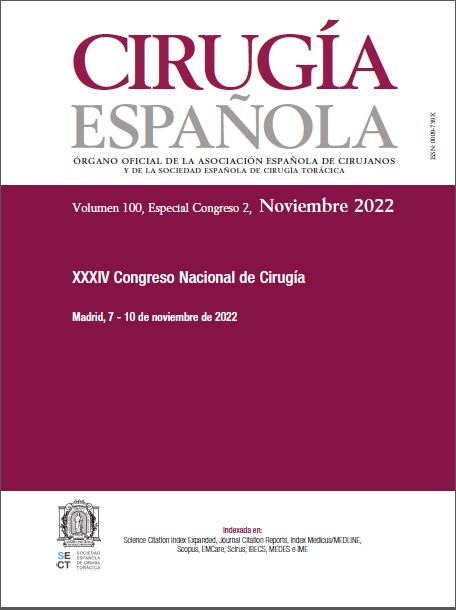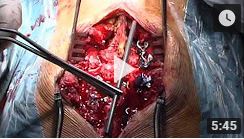V-170 - EXPANDING INDICATION OF LAPAROSCOPIC INTRACORPOREAL RECTUS APONEUROPLASTY (LIRA) TO SUPRAPUBIC AREA: LIRA & TAPE
1Hospital Universitario Son Espases, Palma de Mallorca; 2Hospital Universitario Virgen de la Arrixaca, Murcia; 3Hospital General Básico de Riotinto, Minas de Riotinto; 4Hospital Juan Ramón Jiménez, Huelva; 5Hospital Universitario Virgen del Rocío, Sevilla.
Introduction: Laparoscopic intracorporeal rectus aponeuroplasty (LIRA) has been described as a minimally invasive technique for primary or incisional ventral hernias of the midline, specially from M2 to M4 ventral hernias. These defects, larger than 5-6 cm, are related to an increase in pain and recurrence when the defect is just closed (IPOM-Plus) or as in classic laparoscopic repair (IPOM). The aim of this video is to show the surgical steps for those ventral hernias located at the suprapubic area (M5), where the concept associated to the LIRA technique is used.
Case report LIRA-TAPE technique was performed, as a modification of the original LIRA, in a 75 years-old female patient. Clinical examination and computed tomography (CT) scan showed a 9 cm width incisional hernia (W2), including the supraumbilical (M3), infraumbilical (M4) and suprapubic area (M5) with a total longitudinal length of 18 cm. The first step of the procedure is to open the peritoneum and posterior rectus sheath at 1-2 cm from the edge of the defect over the arcuate line. At the suprapubic area, a bilateral peritoneal flap was done as indicated during the TAPE repair until both Cooper ligaments are identified. Three double loop long-term absorbable monofilament sutures was used for closing the defect, using the rectus muscle below the arcuate line, as well as the posterior rectus sheath above this line. A double layer mesh (macroporous mesh - Gore® SYNECOR Intraperitoneal Biomaterial) is used in this case, being placed intraperitoneally. This mesh should overlap at least 2 cm of the lateral opening of the posterior rectus fascia and fixed to the pubis and both Cooper ligaments using permanent fixation. The peritoneal flap during the TAPE is a useful option since it allows identification of the anatomy, which could avoid vascular injuries and nerve entrapments.
Discussion: E. Chelala et al. were the first to introduce the concept of primary defect closure during laparoscopic ventral hernia repair. Since then, many authors have published different surgical options to perform this technique. J. Gómez-Menchero et al. published a prospective study proposing the LIRA technique for ventral hernias repair larger than 5 cm, concluding that simple closure could be safe in defects less than that width. Two of the criticisms related to the LIRA technique are, in one hand, that the mesh is place intraabdominally and on the other hand, the need for traumatic fixation, which could be related to pain and also an increase of adhesions. However, this technique may allow the possibility of using absorbable fixation devices at non-bone areas, instead of permanent metal tackers, which are the ones related to those adhesions. The combination of LIRA & TAPE techniques provides an extension of the indication of concept associated to the LIRA technique. Our initial experience with this technique shows no recurrences and no postoperative morbidity. This new approach avoids the bulging effect allowing a tension-free closure of the midline together with the advantages of the minimally invasive surgery.








